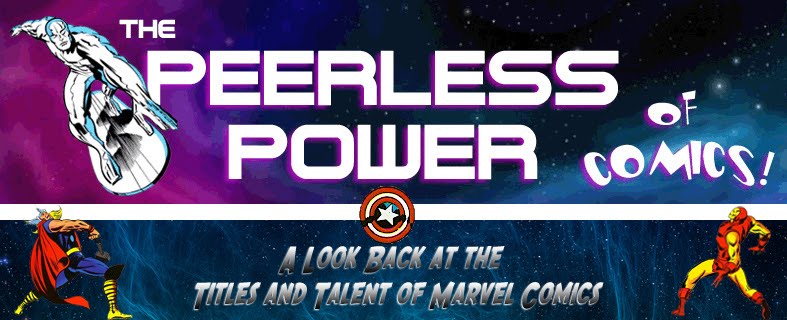While there arguably may not be much to recommend 1969's X-Men #53, it was really the issue's more notable distinctions which drew me to pull it aside and explore it. It's fair to say that the title was in free fall at this point in time, and it seemed all the stops were being pulled out in an effort to resuscitate it (though the Hail Mary move of killing off the book's core character, Charles Xavier, appeared to only send it into more of a tailspin). In a way, you could say that Issue #53 could be regarded as the poster child for where things stood with the X-Men book. Had its villain, Blastaar, somehow prevailed in his efforts to destroy them, it wouldn't have been surprising if readers came away feeling that the book and its characters had been put out of their misery.
That said, it's interesting to take a look at this issue in a different light, as it seemed to trigger a number of changes in the book's development. Currently scripting X-Men was Arnold Drake, a writer with a number of feathers in his cap* including being the creator of DC's Deadman (with Carmine Infantino) and Doom Patrol (with Bob Haney co-scripting), while at Marvel he and artist Gene Colan created the Guardians of the Galaxy. In addition, Roy Thomas would come aboard two issues later, to be eventually joined by artist Neal Adams and provide the book with some of its most acclaimed issues, giving new meaning to the phrase "there's nowhere to go but up."
*Having strong overtones of Jack Kirby's writing style, this issue of X-Men may not give you the best impression of Drake's work, a resume which includes a distinguished history in comics as well as what he brought to the table in terms of character development.
As for the issue's artist, Barry Smith, he produces his first work under the Marvel banner here, himself imitating Kirby (which reportedly secured him the job as well as further work for the company)--a style he would continue soon after in a three-part Avengers tale scripted by Thomas (with Sal Buscema taking over in Part 3).
One more piece of trivia is added nearly twenty years later, when this issue would be recycled as part of a grab bag of comics intended to be distributed as Halloween treats:
The mini-version also featured a Thing-themed maze, as well as a team pin-up by Jim Steranko from issue #49.
As the cover of the story makes obvious, the team is fated to go up against Blastaar, the Living Bomb-Burst, who has found himself unceremoniously returned to the Negative Zone after a failed attempt to enforce his will on our world. As you might imagine, Blastaar is not at all happy to have been deprived of a target like Earth.
Meanwhile, the X-Men's remaining member with mental powers, Marvel Girl, is about to conduct an experiment designed by Professor X to transmute matter into radio waves which could be sent into space. Good grief, Xavier, so this is what you did in your spare time?
So what have we got: A power-mad alien bent on finding a way to transmute his matter in order to safely return himself to Earth... and an untried experiment where nobody in the X-Men can predict what will happen when Jean Grey flips the "on" switch. What could go wrong??





































